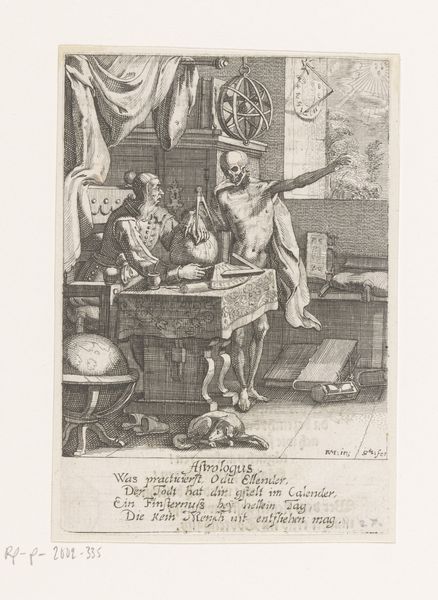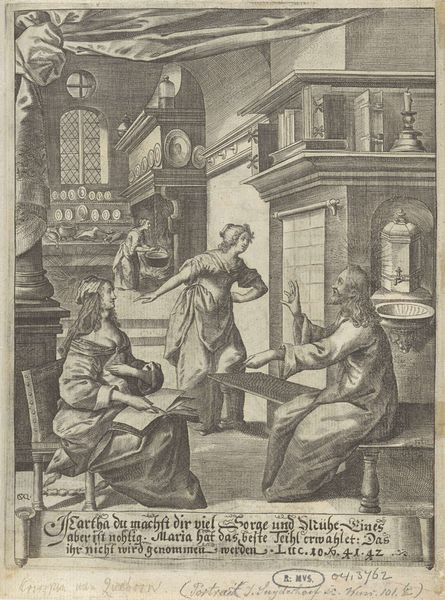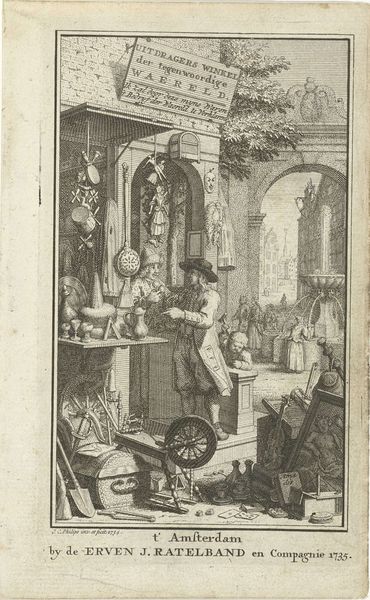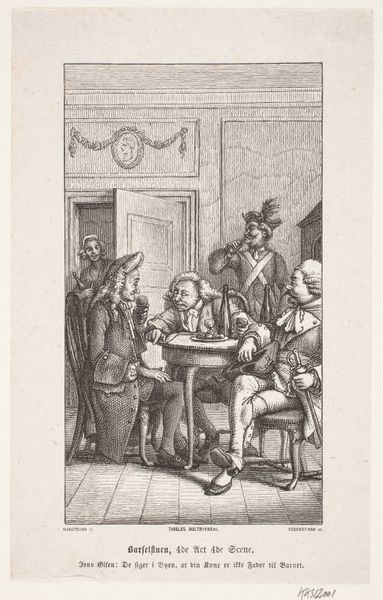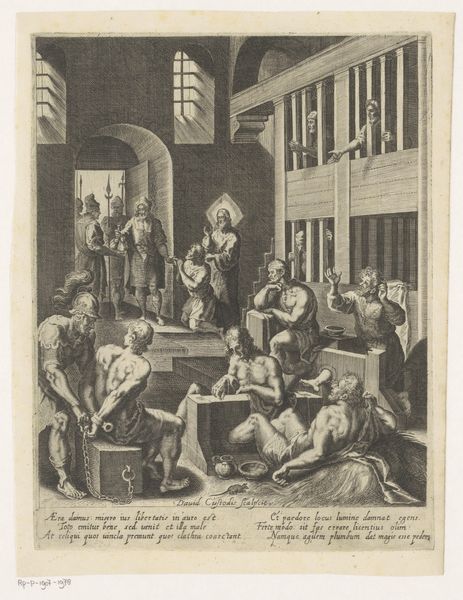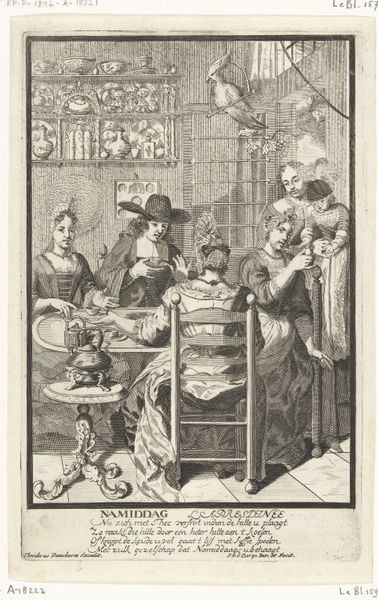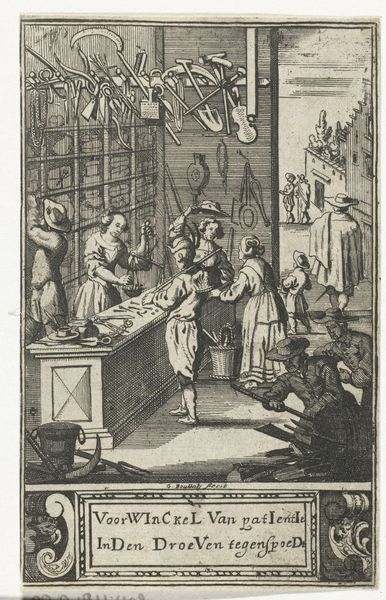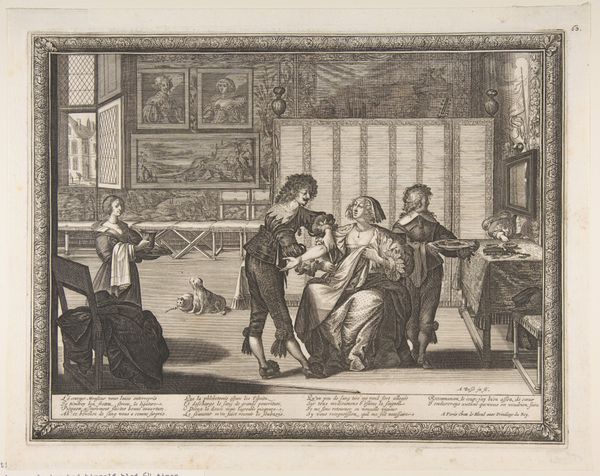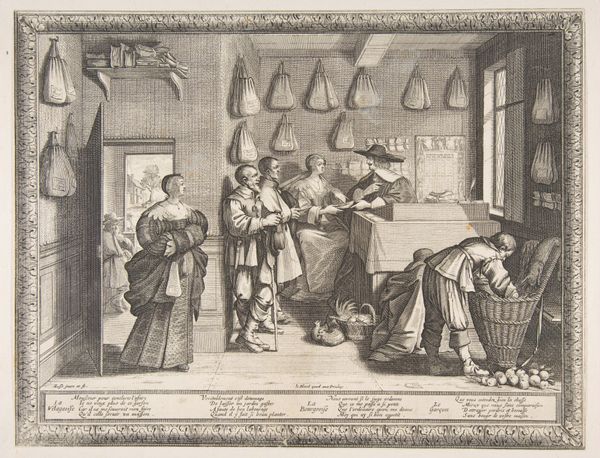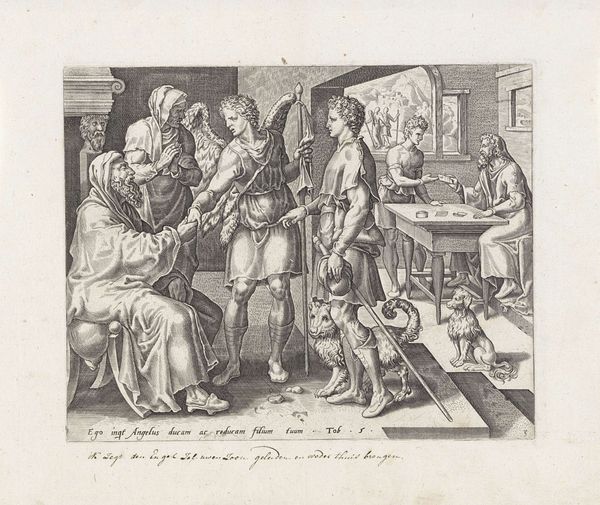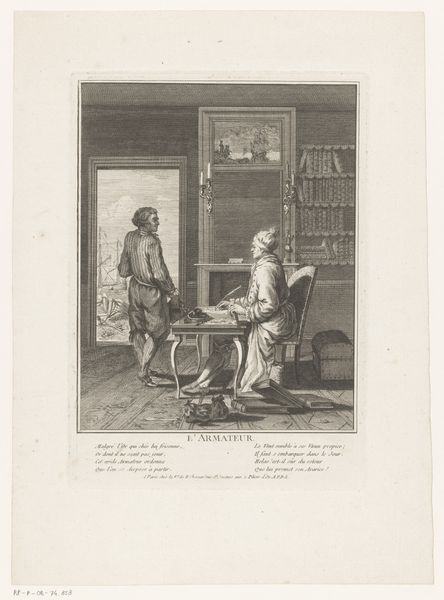
print, engraving
#
allegory
#
narrative-art
#
baroque
# print
#
figuration
#
vanitas
#
genre-painting
#
engraving
Dimensions: height 129 mm, width 90 mm
Copyright: Rijks Museum: Open Domain
Curator: Here we have a striking 17th-century engraving entitled "Dokter en de Dood," or "Doctor and Death," crafted around 1650 by Conrad Meyer. Editor: The first thing that jumps out at me is the incredible detail, especially considering this is a print. There’s a stark contrast between the skeletal figure and the almost cartoonish doctor. Curator: Meyer captures a very popular Baroque theme, the Vanitas. The skeletal figure of Death comes to interrupt a doctor in his work, representing the futility of earthly endeavors in the face of mortality. We are also observing an example of the narrative tradition. Editor: You see that embodied in the composition so clearly. The doctor throws up his hands, a gesture of helplessness, surrounded by the tools of his trade, which are, in this context, rendered entirely useless. Semiotically, each object in the engraving functions as a signifier of our unavoidable fate. Curator: Exactly. Think about the cultural context—plagues and epidemics were rampant during the 17th century, so Death would have been a constant presence. These images served as moral reminders, almost like a visual sermon, warning against the pursuit of earthly riches and advocating for spiritual preparedness. Notice the inscription as well: it speaks to the futility of the doctor's "renowned art." Editor: The scale and fineness of the engraving enhance that message, I think. There's an intimacy to it, drawing the viewer in to contemplate their own mortality. This piece is very evocative, the artist using every line and shadow to amplify that message of inevitable decay and human impotence against the great leveler of Death. Curator: Agreed, it’s a compelling example of how art can act as a cultural mirror. Considering its Baroque origins and allegorical complexity, it serves to give insight into the prevailing existential dread of the 17th Century. Editor: Yes, the density of visual elements adds significantly to the piece’s complexity, making its emotional and thematic depth that much more captivating.
Comments
No comments
Be the first to comment and join the conversation on the ultimate creative platform.
